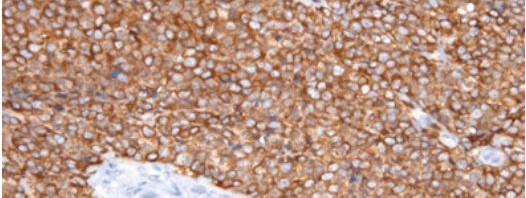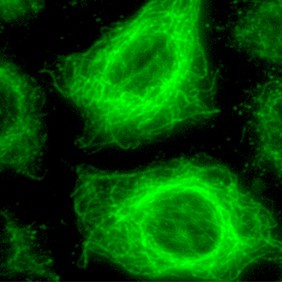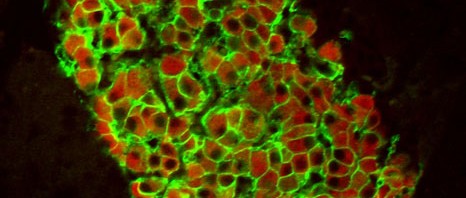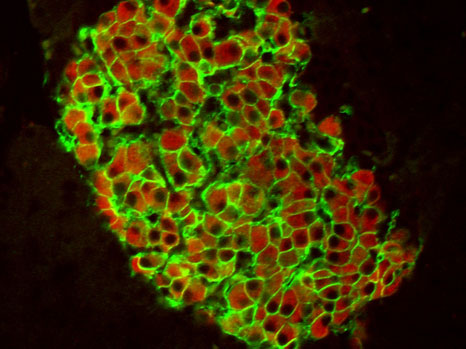Sorry, this article is only available in French.
Month: August 2012
Jeudi 30 août 2012
Sorry, this article is only available in French.
(French) Cancers de l’enfant – Nouvelle piste thérapeutique dans les tumeurs d’Ewing

Sorry, this press release is only available in French.
Mercredi 29 août 2012
Sorry, this article is only available in French.
(French) Une nouvelle molécule aux propriétés anticancéreuses et anti-métastatiques

Sorry, this press release is only available in French.
Mardi 28 août 2012
Sorry, this article is only available in French.
Lundi 27 août 2012
Sorry, this article is only available in French.
Vendredi 24 août 2012
Sorry, this article is only available in French.
Jeudi 23 août 2012
Sorry, this article is only available in French.
Radiation dose to the pancreas and risk of diabetes mellitus in survivors of childhood cancer

Florent de Vathaire, Research Director at Inserm (Epidemiology and Public Health Research Centre, Unit 1018 – University Paris-Sud, Institut Gustave Roussy, Villejuif) and his team have been studying the relation between doses of ionising radiation received to the pancreas during radiotherapy treatment for childhood cancer and the long-term risk of diabetes. The results of their research are published today in The Lancet Oncology
© F.Pattou/Inserm
This study was based on analysis of a cohort of 2,500 people in France and the UK who were treated for childhood cancer before 1986, who have been well for at least 20 years, and who answered a detailed questionnaire on their state of health.
Enfin, pour les auteurs, « le pancréas doit être considéré comme un organe critique lors de la planification de radiothérapie, en particulier chez les enfants ». Ils soulignent : « Jusqu’à présent, le pancréas est l’un des rares organes à ne pas être considéré à risque de complication des tissus normaux dans les directives nationales pour la radiothérapie du cancer. Nos résultats indiquent que le pancréas est un organe à risque pendant la radiothérapie et doit être couturé lors de la planification du traitement, afin de limiter au maximum son irradiation »
After an average monitoring period of 27 years, 65 of the childhood cancer survivors had developed diabetes.
The incidence of diabetes at the age of 45 was found to be 2.3% (95%CI: 0.8% – 6.4%) in individuals who have not received radiotherapy and 6.6% (4.8% – 9.0%) in those that have had radiotherapy. The researchers have demonstrated that the determining factor in increased risk of developing diabetes as adults is the radiation dose received during radiotherapy for childhood cancer and, specifically, the dose to the tail of the pancreas, where the islets of Langerhans are concentrated. It seems that radiation to other parts of the pancreas does not have a significant effect. The incidence of diabetes at the age of 45 is 16.3% (95%CI: 10.9% – 24.0%) in respondents that received over 10 Gray (Gy)[1] to the tail of the pancreas. In the case of low or moderate doses, the risk of developing diabetes later in life increased by 65% (95%CI: 23% – 170%) for each Gy received to the tail of the pancreas.
This is the first study carried out on the relation between the radiation dose received to the pancreas, regardless of the source, and the risk of developing diabetes.
If confirmed by subsequent studies, the linear nature of the relation found by Florent de Vathaire and his co-researchers implies an increased risk of diabetes even for low and moderate doses and this is bound to have implications for public health.
According to the authors, “the pancreas needs to be regarded as a critical organ when planning radiation therapy, particularly in children.” They point out that: “up to now, the pancreas is one of the few organs which, in national guidelines on radiation therapy for cancer, is not thought to entail any risk of complications in normal tissue. Our results show that the pancreas is at risk during radiation therapy and needs to be analysed in depth when planning treatment in order to keep its irradiation to the absolute minimum.”
[1] A Gray (Gy) is the international unit of measurement used for the radiation dose absorbed by the body. One Gray is the equivalent of a dose of 1 Joule of energy absorbed per kilogram.
